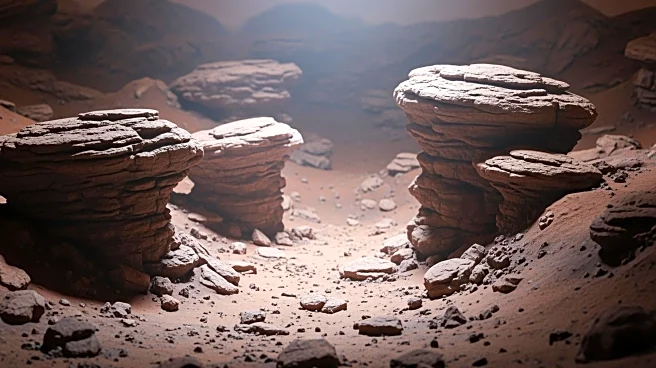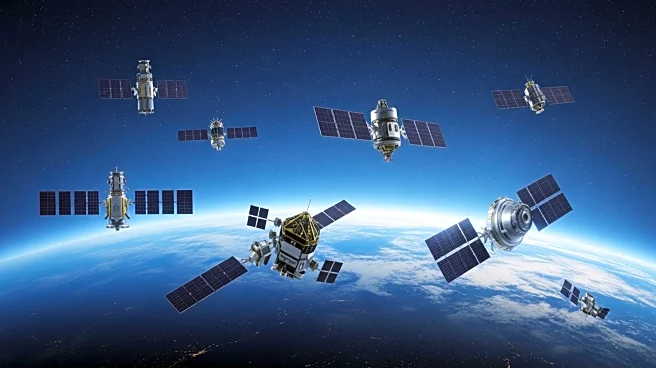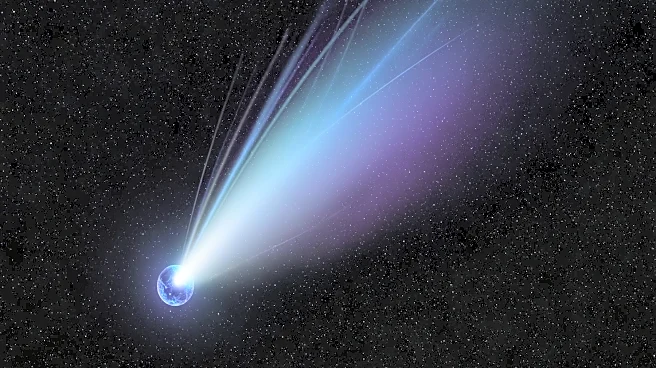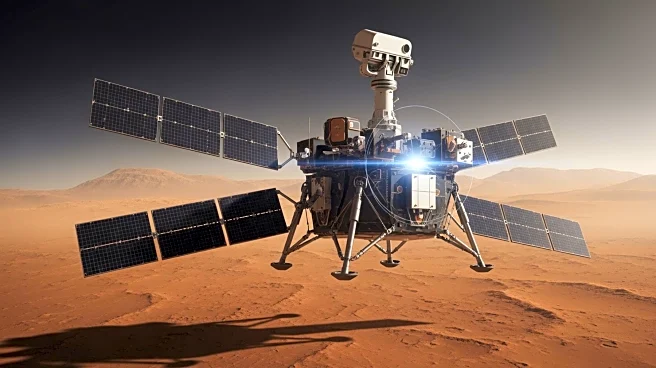What's Happening?
The European Space Agency's ExoMars Trace Gas Orbiter has captured images of dust avalanches on Mars, specifically on the slopes of Apollinaris Mons. These streaks were triggered by a meteoroid impact,
which carved numerous scratches on the Martian surface. The images, taken by the Colour and Stereo Surface Imaging System (CaSSIS), reveal impact craters and discolored regions at the base of the slopes. Scientists have determined that these streaks formed between 2013 and 2017, primarily due to dry processes driven by wind and dust activity, rather than water. A study published in Nature Communications highlights that meteoroid impacts are rare causes of these streaks, with seasonal changes in dust and wind being the predominant factors.
Why It's Important?
Understanding the formation of dust streaks on Mars is crucial for comprehending the planet's current dynamics and its historical climate. These observations can provide insights into Mars' atmospheric conditions and surface processes, which are essential for assessing its habitability and the potential for past life. The findings contribute to the broader scientific goal of mapping Mars' surface and atmospheric composition, aiding future missions in exploring water-rich locations and understanding the planet's ancient past. This research underscores the importance of continuous and global-scale observations to reveal Mars' dynamic nature.
What's Next?
The ExoMars Trace Gas Orbiter will continue to image Mars, aiming to enhance the understanding of its ancient past and potential habitability. Future missions may focus on obtaining long-term observations to further explore the planet's surface dynamics and atmospheric conditions. These efforts are part of ESA's ongoing commitment to uncovering Mars' history, particularly regarding water presence and its implications for life. The data collected will support future explorations and scientific studies, potentially leading to new discoveries about Mars' environment.
Beyond the Headlines
The study of dust streaks on Mars not only advances scientific knowledge but also raises questions about the ethical implications of planetary exploration. As missions continue to probe Mars, considerations about contamination and preservation of its natural state become increasingly relevant. The research also highlights the role of advanced technologies, such as deep learning algorithms, in analyzing vast datasets to uncover planetary phenomena. These technological advancements are pivotal in driving forward space exploration and understanding extraterrestrial environments.











